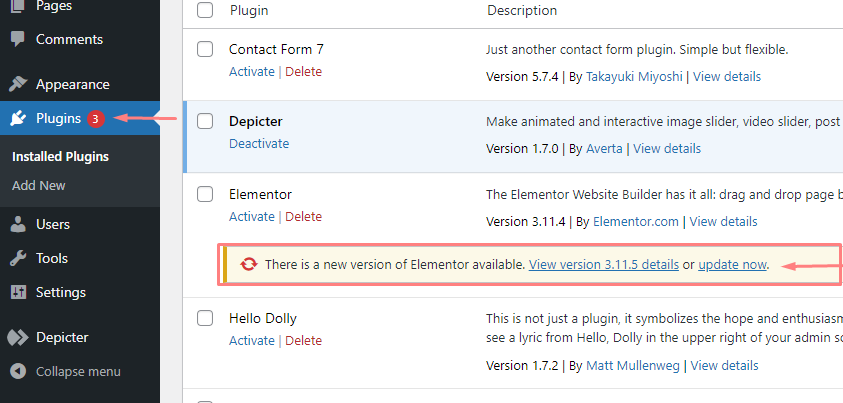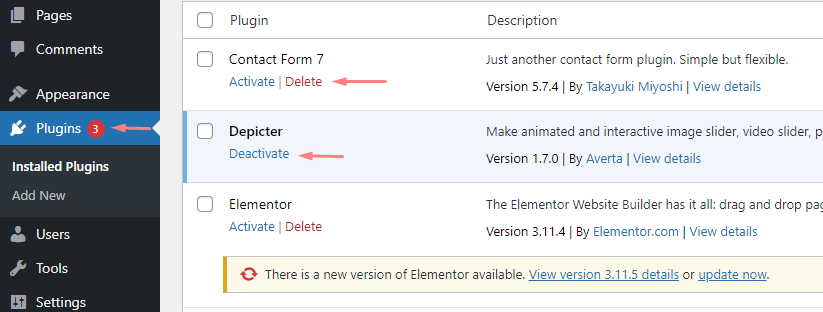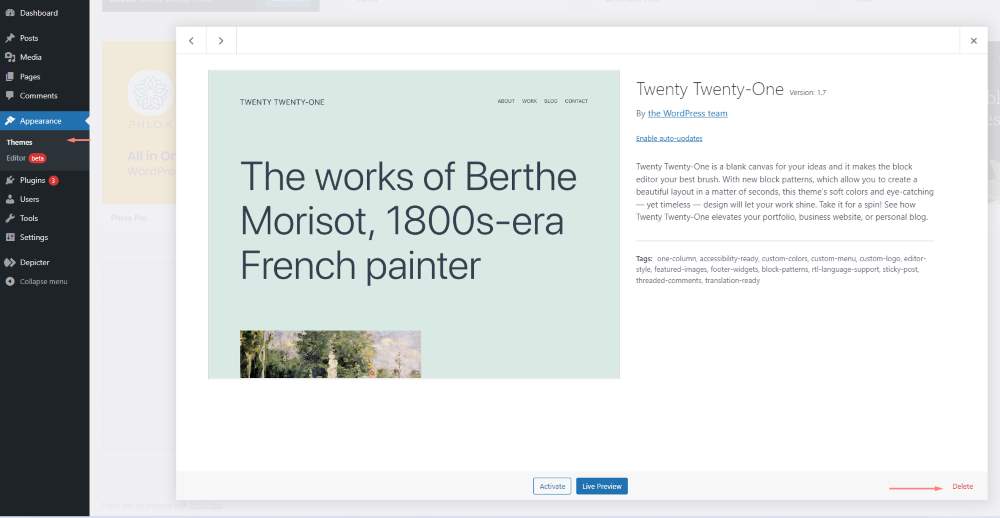In today’s digital age, the internet has become an essential part of our lives. With the increasing use of the internet, the risk of cyber-attacks and data breaches has also risen significantly, especially for WordPress websites. WordPress is the most widely used Content Management System (CMS) globally, powering over 40% of all websites on the internet. This makes it a prime target for hackers who seek to exploit vulnerabilities in the platform and gain unauthorized access to sensitive data.
That’s why it’s crucial to take proactive steps to ensure your WordPress website’s security. One of the most effective ways to do this is by performing a security audit. By conducting a security audit, you can assess the security of your website and identify any vulnerabilities or weaknesses that could be exploited by hackers. Performing a security audit on your WordPress website can also help you take the necessary steps to secure your website and prevent future hacks.
The only way to ensure WordPress security is to take a proactive approach, implementing measures to prevent cyber threats before they can do harm.
Sucuri Security
In this article, we will guide you on how to perform a security audit on a WordPress website and prevent future hacks. We will provide step-by-step instructions on how to assess your website’s security and identify potential vulnerabilities, along with tips on how to fix any security issues that you discover during the audit.
By the end of this article, you will have a comprehensive understanding of how to secure your WordPress website with the help of SiteWise, a digital agency specializing in WordPress maintenance services.
Let’s design, maintain, and perfect your dream website!
Table of Contents
What is a WordPress Security Audit?
A WordPress security audit is a comprehensive review of your website’s security measures and vulnerabilities. It involves examining your website’s code, plugins, and themes to identify any weaknesses that could be exploited by hackers. The goal of a security audit is to detect and fix any security flaws before they can be exploited, preventing potential data breaches, malware infections, or other cyber threats.
A WordPress security audit helps identify and fix vulnerabilities in your website’s security.
Why Do You Need a WordPress Security Audit?
A WordPress security audit is essential for any website owner who wants to protect their website from cyber threats. By conducting a security audit, you can identify vulnerabilities and take proactive measures to fix them before they can be exploited by hackers. This will help to prevent costly data breaches, downtime, and damage to your reputation.
The security of your WordPress site is crucial, not only for protecting your business but also for safeguarding your visitors’ personal information.
Neil Patel
What Does a WordPress Security Audit Involve?
A WordPress security audit typically involves several steps, including:
- Reviewing Your Website’s Code: The security audit will involve reviewing your website’s code to ensure that it is secure and free from vulnerabilities. This may involve examining your website’s theme and plugin code, as well as any custom code that has been added to your website.
- Testing Your Website’s Security Measures: The WordPress security audit will also involve testing your website’s security measures, such as firewalls, antivirus software, and other security plugins. This will help to identify any weaknesses in your website’s security measures.
- Checking for Outdated Software: Outdated software is one of the most common ways that hackers exploit vulnerabilities in websites. The security audit will involve checking for any outdated software on your website and updating it to the latest version.
- Reviewing User Permissions: The WordPress security audit will also involve reviewing user permissions to ensure that users only have access to the areas of your website that they need. This will help to prevent unauthorized access to sensitive data.
- Implementing Best Practices: Finally, the WordPress security audit will involve implementing best practices to ensure that your website remains secure in the future. This may involve implementing two-factor authentication, using strong passwords, and regularly backing up your website’s data.
Step One: Assess Your Current Security Measures
Ensuring the security of your website is crucial in protecting your valuable data and maintaining the trust of your audience. Before you can begin implementing any security measures, it’s important to assess your current security measures to identify any potential weaknesses or vulnerabilities. This initial step will help you determine the areas of your website that need improvement and guide your efforts to strengthen your website’s security.
By taking the time to thoroughly evaluate your existing security measures, you can develop a comprehensive plan that will effectively safeguard your website against any potential threats. In this article, we’ll take a closer look at the first step in performing a security audit on a WordPress website: assessing your current security measures. We’ll provide you with tips and guidance on how to conduct an effective assessment to help you identify and address any security issues. By following these steps, you can ensure that your website is secure and protected from any potential hacks or cyber attacks.

Check for Outdated Software and Plugins
The first step to performing a security audit on your WordPress website is to assess your current security measures. This involves checking your website for any outdated software and plugins that may be vulnerable to security breaches. Outdated software and plugins can provide hackers with an easy way to gain access to your website, so it’s important to keep them up to date.
To check for outdated software and plugins, go to your WordPress dashboard and click on the ‘Updates’ option. Here, you will be able to see if there are any updates available for your WordPress version, themes, and plugins. If there are updates available, make sure to install them as soon as possible.

Review Your Password Policies
The next step is to review your password policies. Weak passwords are one of the most common ways that hackers gain access to WordPress websites. To prevent this, make sure that your password policies are strong and secure. Use a mix of upper and lowercase letters, numbers, and symbols, and avoid using easily guessable passwords like ‘password123’.
You should also consider implementing two-factor authentication for an extra layer of security. Two-factor authentication requires users to enter a code sent to their mobile device, in addition to their password, before gaining access to the website.
Evaluate Your Hosting Provider
The third step is to evaluate your hosting provider. Your hosting provider plays a crucial role in the security of your website, so it’s important to choose a reliable and secure provider. Look for a provider that offers SSL encryption, regular backups, and security measures like firewalls and malware scans.
If your current hosting provider doesn’t meet these standards, consider switching to a more secure option. It may be more expensive, but the added security is worth the investment.
Choosing the right hosting provider for your WordPress site is critical for ensuring its security and performance. Evaluating your hosting provider’s security measures and reputation can help you make an informed decision and keep your site safe from potential cyber threats.
WPForms
By following these steps, you’ll be able to assess your current security measures and make any necessary updates or changes to prevent future hacks on your WordPress website.
Step Two: Keep Your WordPress Site and Plugins Up-to-Date
Keeping your WordPress site and plugins up-to-date is crucial for maintaining security. Outdated software is one of the leading causes of security vulnerabilities. As new security threats emerge, developers release updates to patch those vulnerabilities. Ignoring these updates can leave your site open to attack.
Update Your WordPress Core
WordPress regularly releases updates to its core software that provide new features and security patches. To update your WordPress site, log in to your WordPress dashboard and click on the “Updates” tab. Here, you can see if any updates are available for your site’s WordPress core software, themes, and plugins.
Updating WordPress is not just about getting new features, but it’s also about keeping your site secure.
Chris Coyier
Update Your Plugins
Outdated plugins are another common entry point for hackers. When developers release updates, they often include security patches along with new features. So, it is crucial to keep your plugins up-to-date to prevent vulnerabilities.
To update your plugins, go to the “Plugins” section of your WordPress dashboard. Here, you can see which plugins need updates and easily update them with the click of a button.

Remove Unused Plugins and Themes
While having too many plugins and themes may seem harmless, it can actually create security risks. Even if you are not actively using a plugin or theme, it can still pose a threat if it is outdated and vulnerable to attack. So, it’s important to remove any unused plugins or themes.
To remove unused plugins or themes, go to the “Plugins” or “Appearance” section of your WordPress dashboard, respectively. From there, you can easily deactivate and delete any unused items.


By following these steps, you can keep your WordPress site and plugins up-to-date, reducing the risk of security vulnerabilities and preventing future hacks.
Step Three: Harden WordPress Security
Once you have identified and fixed all the security vulnerabilities on your WordPress website, the next step is to harden its security to prevent future attacks. By taking proactive measures to secure your website, you can significantly reduce the risk of cyber attacks and keep your website safe from malicious activities.
Implement Security Measures to Harden Your Website
There are several security measures that you can implement to harden your website’s security:
Enable Two-Factor Authentication to Prevent Future Hacks
Two-factor authentication adds an extra layer of security to your website’s login process. With two-factor authentication enabled, users are required to provide an additional authentication factor, such as a code sent to their mobile device, along with their username and password. This makes it much harder for hackers to gain access to your website, even if they have your login credentials.
Enabling two-factor authentication on WordPress adds an extra layer of security to protect your website from unauthorized access.
Keep Your WordPress Site Up-to-Date
Keeping your WordPress site up-to-date is essential for maintaining its security. Whenever a new version of WordPress or a plugin is released, it often contains security patches that address vulnerabilities that could be exploited by hackers. By keeping your site up-to-date, you ensure that you have the latest security patches installed, reducing the risk of successful attacks.
Updating WordPress regularly is the best way to ensure that your site is running smoothly, securely, and with the latest features and functionality.
DreamHost
Here are some tips for keeping your site up to date:
- Set up automatic updates: You can configure WordPress to automatically update itself, as well as any plugins and themes installed on your site. This ensures that your website always has the latest security patches and bug fixes without requiring you to manually update each component.
- Regularly check for updates: Even if you have automatic updates set up, it’s still a good idea to regularly check for updates and apply them as soon as they’re available. This helps to ensure that any security vulnerabilities are addressed as soon as possible.
- Be cautious when updating: While updates are important, they can sometimes cause compatibility issues or even break your website. To avoid any issues, it’s important to take backups of your site before making any updates and to test them thoroughly after updating.
Step Four: Install Security Plugins and Keep Them Updated
Now that you have tightened the security of your WordPress website, the next step is to install security plugins to add an extra layer of protection. Security plugins help to prevent malicious attacks, detect malware, and block spam.
Security plugins provide an extra layer of protection for your website by detecting and blocking malicious activities. There are several free and premium security plugins available for WordPress, such as Wordfence, Sucuri Security, and iThemes Security. These plugins can help you detect and block malicious login attempts, monitor file changes, scan for malware, and much more.
Recommended Security Plugins for WordPress
With so many security plugins available for WordPress, it can be overwhelming to choose the right one for your website. However, there are some top-rated and recommended security plugins for WordPress that can provide robust security features to keep your site safe from hackers.
One such plugin is Wordfence Security, which has over 3 million active installations and is one of the most popular security plugins for WordPress. It offers a firewall, malware scanner, login security, and more. Another popular plugin is Sucuri Security, which offers similar features as Wordfence but also includes a website firewall and DDoS protection.
In today’s digital landscape, website security is no longer an option but a necessity. WordPress website owners must make security a top priority to protect themselves and their users from cyber attacks.
Wordfence Security
Aside from these plugins, there are other security plugins available in the WordPress plugin repository, such as iThemes Security, Jetpack Security, and All In One WP Security & Firewall. It’s recommended to research and compare each plugin to find the one that best suits your website’s needs.
Website security should never be an afterthought. Taking steps to secure your WordPress site from the start can save you a lot of headaches down the road.
iThemes Security
Once you’ve installed your chosen security plugin, make sure to keep it updated to ensure that it has the latest security features and patches for any vulnerabilities. Outdated plugins can be easily exploited by hackers, so it’s essential to keep them updated regularly.
By following these steps and installing recommended security plugins for WordPress, you can significantly reduce the chances of your WordPress website being hacked or compromised.
Step Five: Regularly Backup Your Website
Backing up your website is an essential task that every website owner should prioritize. A website backup is essentially a copy of your website’s files and database that can be used to restore your site in case of a crash, hack, or accidental deletion. A backup helps you recover your website quickly and easily, without losing any data or compromising your website’s security.
Here are some reasons why you should regularly backup your website:
- Protects Against Hacks and Malware Hackers and malware can wreak havoc on your website and cause significant damage. They can delete files, change your website’s code, and steal sensitive data. By backing up your website regularly, you can quickly restore it to its previous state before the attack, without losing any data.
- Ensures Data Safety Website backups ensure that your valuable data is safe and secure. If your website contains important information, such as customer data or financial records, losing that data can be catastrophic. By regularly backing up your website, you can ensure that your data is protected, and you can quickly recover it if something goes wrong.
- Saves Time and Money If your website crashes or is hacked, you may need to hire a professional to recover your data or fix the issue. This can be time-consuming and expensive. By regularly backing up your website, you can save time and money by quickly restoring your site yourself.
Backing up your website regularly is an essential task that every website owner should perform. It protects your website against hacks and malware, ensures your data safety, and saves time and money in the event of a crash or hack.
WordPress Security Best Practices: Protecting Your Website from Cyber Threats
WordPress is a popular content management system that powers millions of websites worldwide. However, with its popularity comes the risk of cyber threats, such as malware infections, hacking, and data theft. That’s why it’s essential to implement WordPress security best practices to protect your website from these threats.
Implementing security measures such as firewalls, antivirus software, and regular updates are essential for protecting your website from cyber threats.
SiteWise
One of the most important WordPress security best practices is to keep your software up-to-date. WordPress regularly releases security patches to address vulnerabilities and protect its users from cyber attacks. However, outdated software can pose a significant security risk, as hackers can exploit known vulnerabilities to gain unauthorized access to your website.

Another crucial WordPress security best practices is to use strong passwords and usernames. Weak passwords and usernames are easy targets for hackers, who use automated tools to guess them. To create strong passwords, use a combination of uppercase and lowercase letters, numbers, and special characters. Avoid using common words or phrases and never use personal information. Additionally, use unique usernames that are not easy to guess, and avoid using default usernames such as “admin.”
WordPress Website Security Maintenance Service to Prevent Hacks and Ensure Protection
As the most popular Content Management System (CMS) on the internet, WordPress is an attractive target for hackers who seek to exploit vulnerabilities and gain unauthorized access to sensitive data. With the increasing risk of cyber attacks and data breaches, it’s essential to take proactive steps to ensure that your WordPress website is secure.

One of the most effective ways to do this is by utilizing a WordPress website security maintenance service. By regularly performing maintenance tasks and security checks, you can prevent hacks and ensure the protection of your website and its visitors.
SiteWise Digital Agency offers a comprehensive WordPress website security maintenance service that includes all the necessary measures to keep your website secure. Our team of experts performs regular backups, updates WordPress software and plugins, and monitors your website for any suspicious activity.
With our service, you can rest assured that your website is protected from potential security threats, including malware, phishing, and other types of cyber attacks. We use the latest security tools and techniques to ensure that your website is safe and secure.
Regular WordPress website security maintenance is necessary to ensure that your site remains secure and protected against potential cyber threats.
SiteWise
Our service also includes a detailed security audit to identify any vulnerabilities in your website’s security. We will provide you with a report that outlines any potential security issues and recommend the necessary steps to fix them.
In addition to the security maintenance service, SiteWise Digital Agency also offers a range of other WordPress maintenance services, including website speed optimization, plugin and theme updates, and website backups.
By utilizing SiteWise Digital Agency’s WordPress website security maintenance service, you can ensure that your website is protected from potential security threats and prevent hacks from occurring. With our team of experts handling your website’s security, you can focus on your business and leave the technical details to us.
Don’t wait until it’s too late. Contact SiteWise Digital Agency today to learn more about our WordPress website security maintenance service and take the necessary steps to protect your website from cyber attacks and data breaches.
conclusion of How to Perform a Security Audit on a WordPress Website
In conclusion, performing a security audit on your WordPress website is an important step in ensuring the safety and security of your website, your visitors, and your business. By following the steps outlined in this article and regularly performing security audits, you can prevent future hacks and keep your website safe from malicious attacks.
Remember to regularly update your WordPress software and plugins, use strong and unique passwords, limit access to your website’s files, and regularly backup your website’s data. By taking these measures, you can minimize the risk of your website being hacked and protect the valuable information and resources on your website. If you’re not confident in your ability to perform a security audit or need assistance with securing your WordPress website, consider hiring a professional web developer or security expert who can provide you with the expertise and tools necessary to keep your website safe and secure.
For those looking for reliable WordPress maintenance services, SiteWise digital agency offers a range of options to keep your website up-to-date and secure. Our team of experts will regularly update your website’s software and plugins, perform backups, and implement security measures to prevent potential threats. By entrusting your website’s maintenance to SiteWise, you can have peace of mind knowing that your website is in capable hands.
In the constantly evolving world of online security, staying informed and proactive is crucial. By taking the necessary steps to secure your WordPress website and regularly performing security audits, you can safeguard your online presence and protect your business from potentially devastating security breaches.
FAQs of WordPress Security Audit
How to prevent malware attacks on WordPress websites?
To prevent malware attacks on your WordPress website, you should follow some essential best practices, such as keeping your software up-to-date, using strong passwords and usernames, installing only trusted plugins and themes, limiting login attempts, and backing up your website regularly. Additionally, consider using security plugins and firewalls to add an extra layer of protection.
How to secure WordPress site without plugin?
While plugins can add an extra layer of security to your WordPress website, there are several ways to secure your website without using plugins. You can use strong passwords and usernames, install and update your software, regularly backup your website, limit login attempts, and implement SSL encryption. Additionally, you can secure your website by using a secure hosting provider, disabling file editing, and removing unnecessary files and themes.
How to remove malware from WordPress website?
If your WordPress website is infected with malware, the first step is to identify and locate the malware. You can use security plugins to scan your website for malware and remove any detected infections. Additionally, you can manually remove the malware by reviewing your website files, removing any suspicious code, and restoring your website from a clean backup. It’s also essential to update your software and change your passwords to prevent future infections.
How to secure WordPress website from hackers?
To secure your WordPress website from hackers, you should follow some essential best practices, such as using strong passwords and usernames, regularly updating your software, installing only trusted plugins and themes, limiting login attempts, and backing up your website regularly. Additionally, consider using security plugins and firewalls to add an extra layer of protection. It’s also important to use SSL encryption, disable file editing, and remove unnecessary files and themes. Finally, consider using a secure hosting provider and implementing two-factor authentication for added security.
What are the best recommended security plugins for WordPress to implement WordPress security best practices?
Implementing WordPress security best practices, such as keeping your software up-to-date, using strong passwords and usernames, and regularly backing up your website, is crucial for website security. However, adding a security plugin can enhance your website’s security even further. Wordfence Security, Sucuri Security, iThemes Security, and Jetpack Security are some of the popular and recommended security plugins that offer various security features, including malware scanning, firewall protection, login protection, and more. Using a security plugin, along with other best practices, can help ensure the security of your WordPress website.
Do I need to install security plugins on my WordPress website to ensure WordPress security best practices?
While implementing WordPress security best practices is necessary for website security, using security plugins can add an extra layer of protection to your website. Wordfence Security, Sucuri Security, iThemes Security, and Jetpack Security are some of the popular and recommended security plugins for WordPress. These plugins offer various security features, such as malware scanning, firewall protection, login protection, and more, that can help prevent cyber threats. Therefore, installing a security plugin on your WordPress website can help you implement WordPress security best practices and ensure the security of your website.
What is a WordPress Security Audit, and why is it important to conduct one to ensure WordPress security best practices?
A WordPress Security Audit is a comprehensive review of your website’s security vulnerabilities, including potential threats and weaknesses that may be exploited by cybercriminals. Conducting a security audit is a critical step in implementing WordPress security best practices, as it helps identify areas that need improvement and enables you to take proactive measures to secure your website.
What does a WordPress Security Audit involve, and how often should it be conducted to maintain WordPress security best practices?
A WordPress Security Audit typically involves reviewing your website’s security configurations, including user permissions, password policies, and plugins and themes used on your site. It also includes running vulnerability scans, reviewing access logs, and checking for malware infections. Depending on the size and complexity of your website, a security audit can take anywhere from a few hours to several days. To maintain WordPress security best practices, it’s recommended to conduct a security audit at least once a year or whenever you make significant changes to your website, such as adding new plugins or themes.



I have read your blog on How can we perform a security audit of WordPress website. it was very interesting and very helpful for me and other people but i can share some extra points with you and other people.Here some points to add your article:
1.Check for any WordPress core, plugin, theme, or PHP updates
2.Manage your backups and back-up tools
3.Assess your usernames, passwords, and database name
4.Remove unused plugins, themes, and files from your server
5.Log out or remove inactive users
These are some extra points to add to your article. Readers if you are confused about your web and App development , you can get a free consultation at Alakmalak technologies.Visit our site for more information.
Thank you for taking the time to read our blog post and for sharing your valuable insights on performing a security audit of a WordPress website. We appreciate your additional points, and we agree that they are essential to ensuring the security and functionality of a WordPress website.
We encourage our readers to take note of your suggestions, including checking for updates to WordPress core, plugins, themes, or PHP, managing backups and backup tools, assessing usernames, passwords, and database names, removing unused plugins, themes, and files from the server, and logging out or removing inactive users. These are all critical steps to take when performing a security audit of a WordPress website.
We also appreciate the offer of a free consultation at Alakmalak Technologies for those who may be confused about their web and app development. It’s always good to have access to expert advice and resources to help ensure the security and success of your website or application.